Build Quality
As we already know the Corsair CV450 features a single 120mm fan design like many other offerings on the market that has come to be the preferred standard for quiet cooling environments due to the ability to move a larger volume of air at slower speeds than a smaller diameter fan. While great for quiet computing environments the key criteria in our evaluation is whether or not the cooling solution is sufficient, not necessarily its sound level or form factor.
External Build Quality
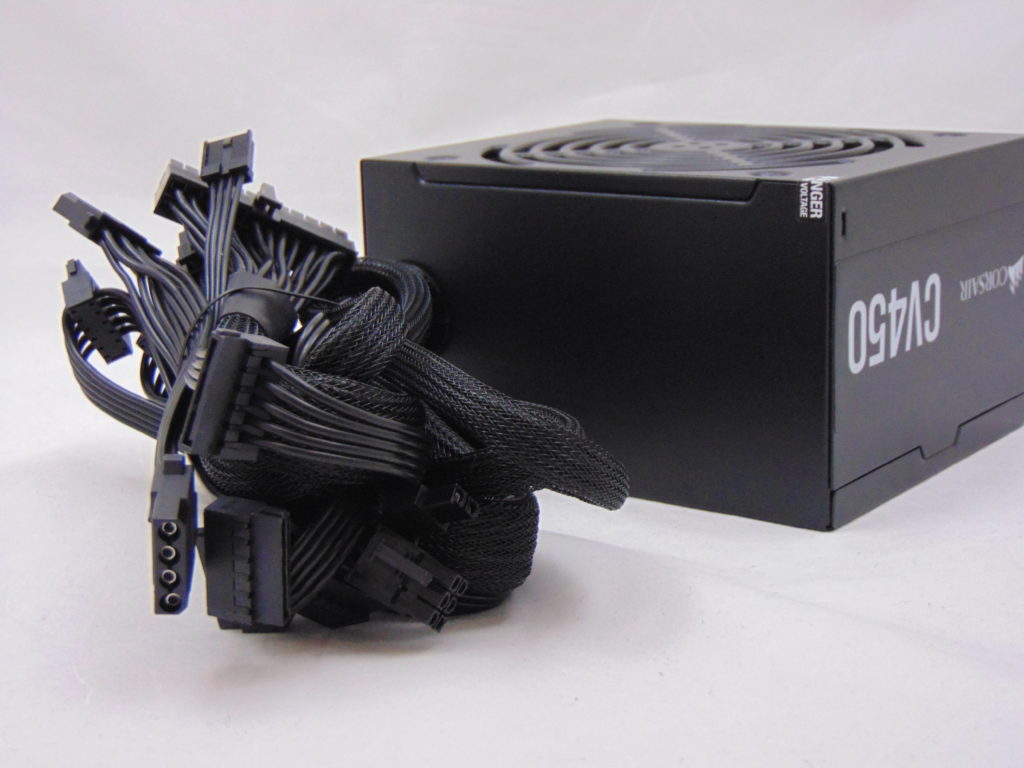


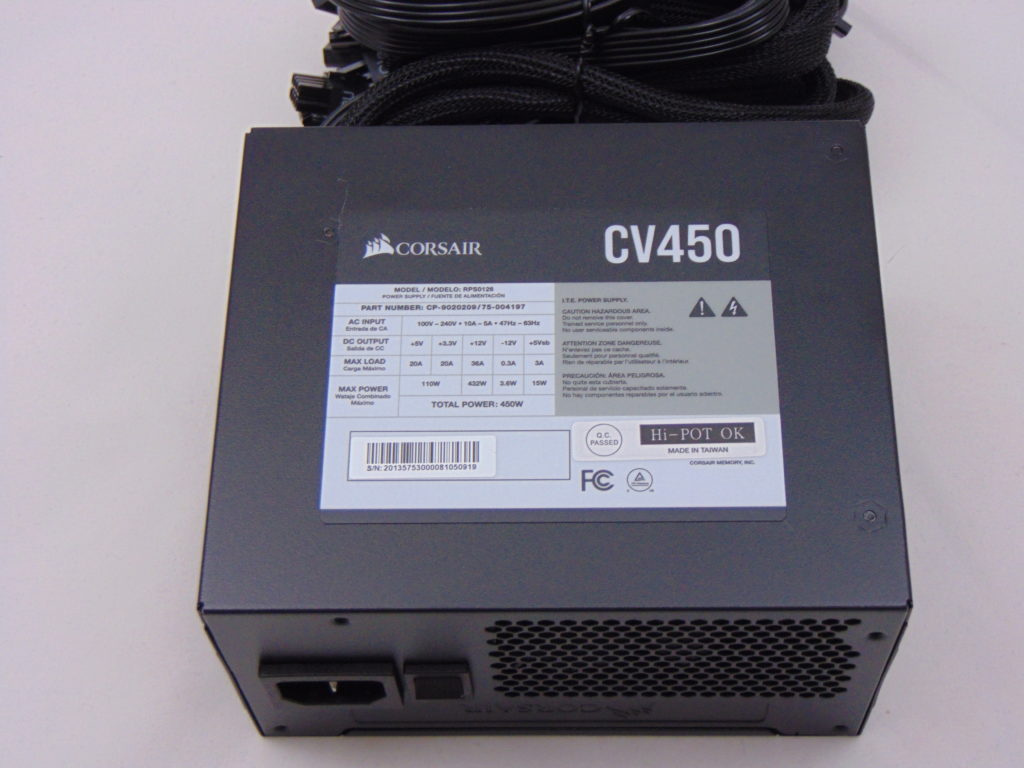
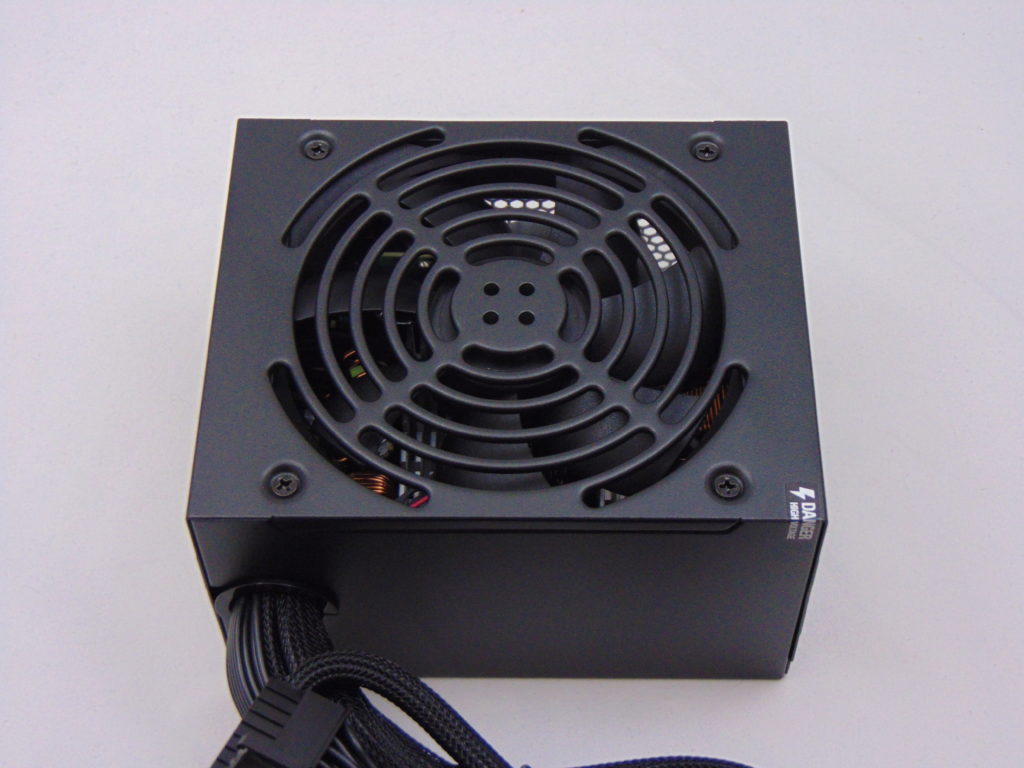
The exterior of the Corsair CV450 is rather basic. The layout is traditional for a fixed cabled unit with an overhead fan in the ATX12v/EPS form factor. Cosmetically, the unit carries the CV450 branding on the side of the housing and with the Corsair name embossed in the housing itself on the rear. Speaking of which, the rear features the most restrictive exhaust that I have seen in years. The fan grill on the top of the unit is nothing special but does look a bit different than the parallel slat design on some of Corsair’s higher end products. Rounding things out, the unit has a durable black finish that is slightly textured.
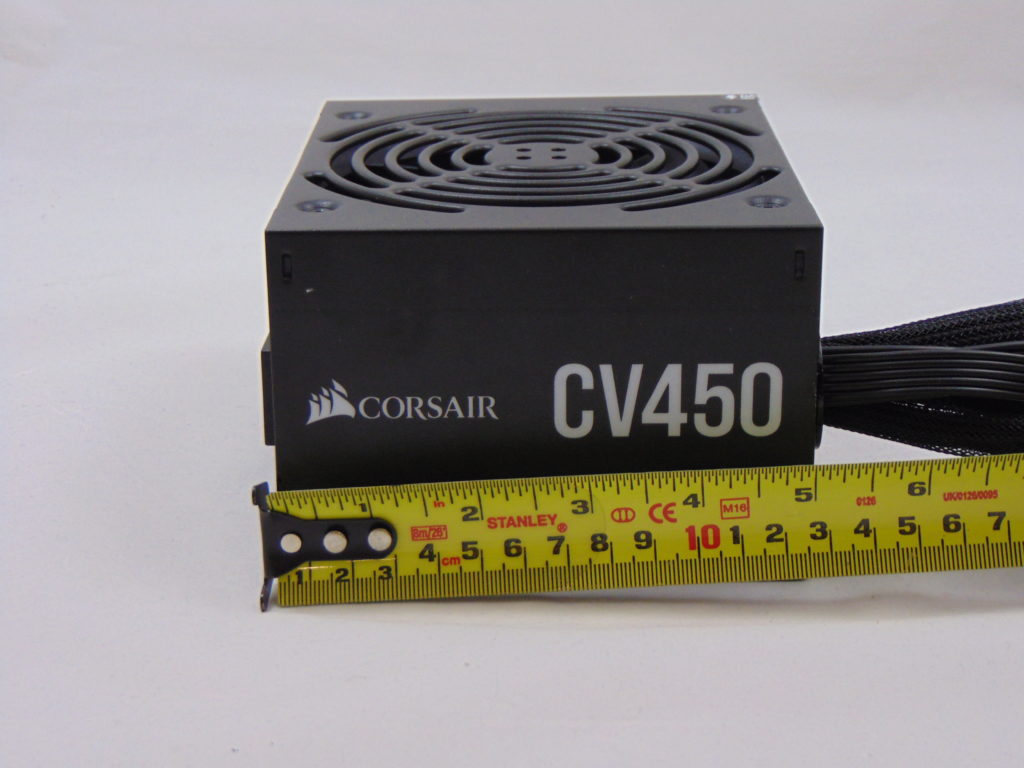

The CV450 comes in at a total length of ~5 inches while the cables come in at a length of ~16″ to 25″ to the first or only connector. Additionally, the cables are mixed between FlexForce style cables and standard wire loom.
Internal Build Quality
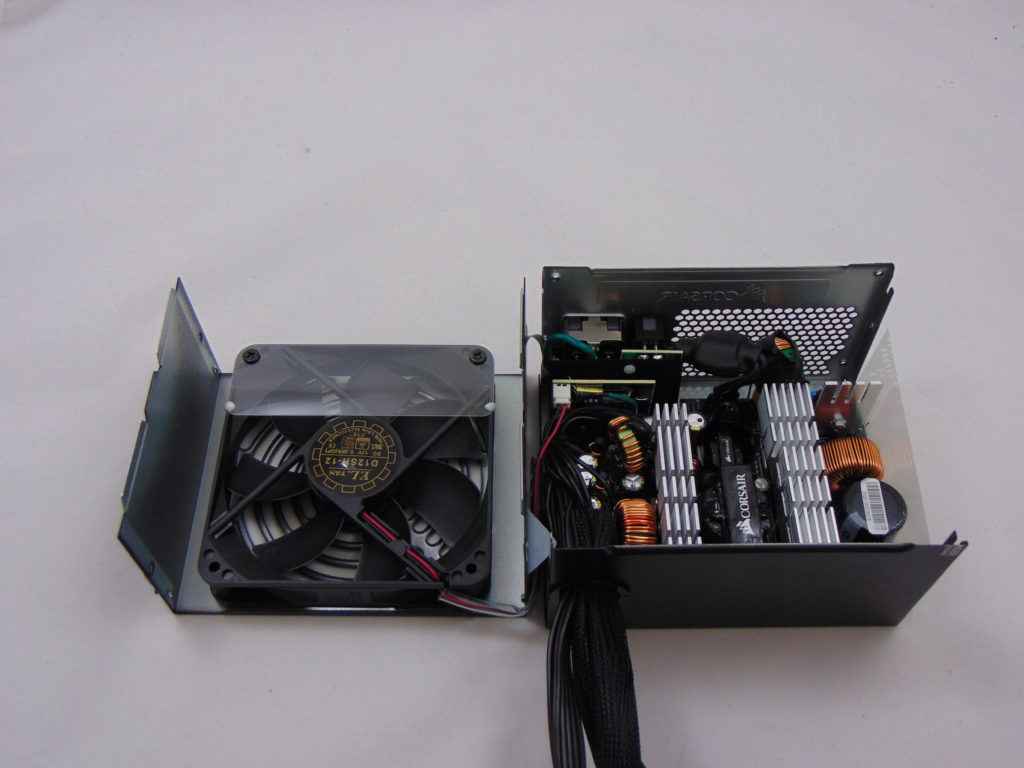

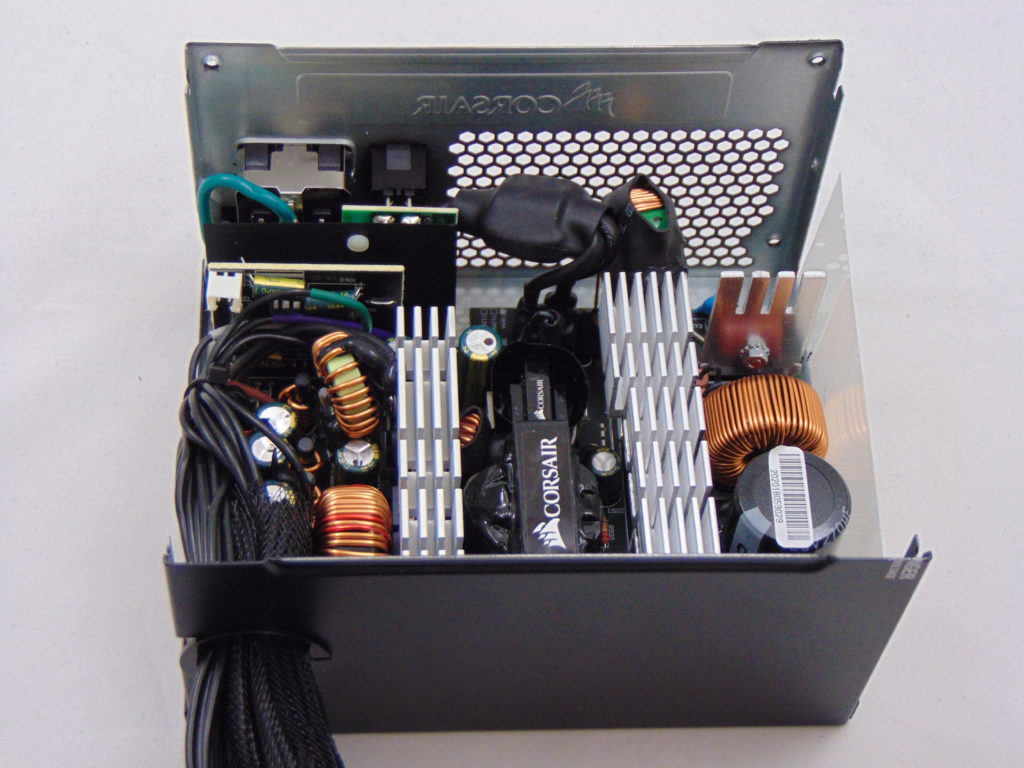
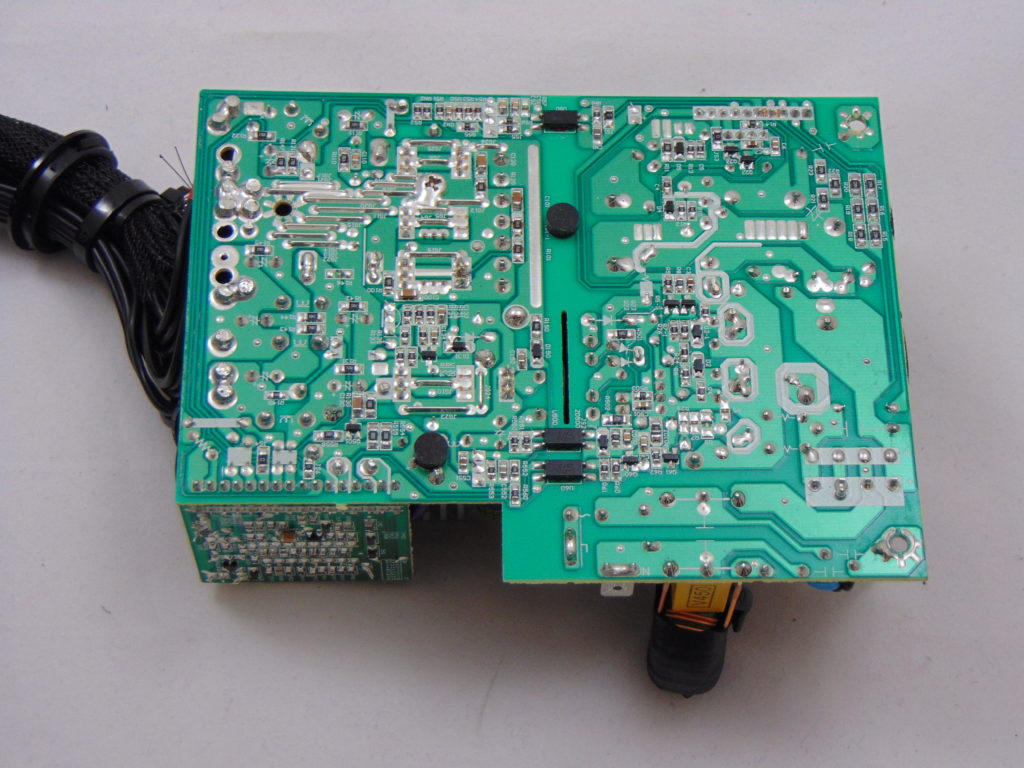
Once we open the top of the Corsair CV450 we see a dated HEC platform that we have not seen before. The topology features a double forward primary and a group regulated secondary. The fan cooling this unit today is a sleeve bearing fan from Yate Loon rated at 0.3A at 12v. It is paired with two large heatsinks and one small heatsink. Lastly, the soldering is very nice on this single layer PCB.
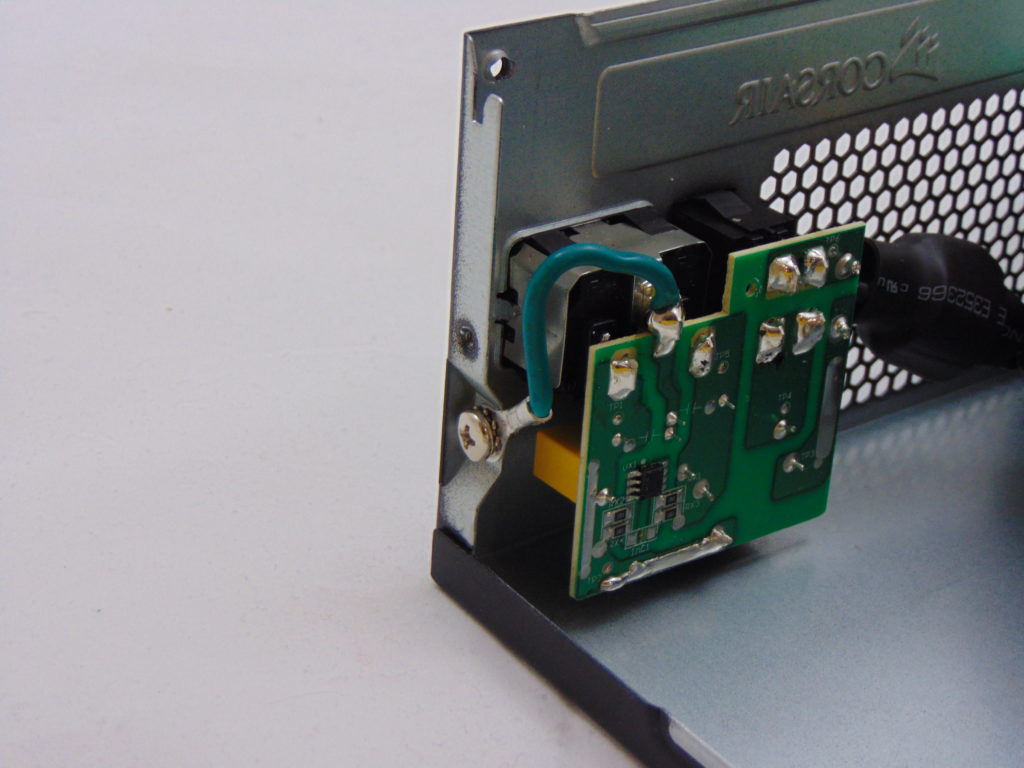
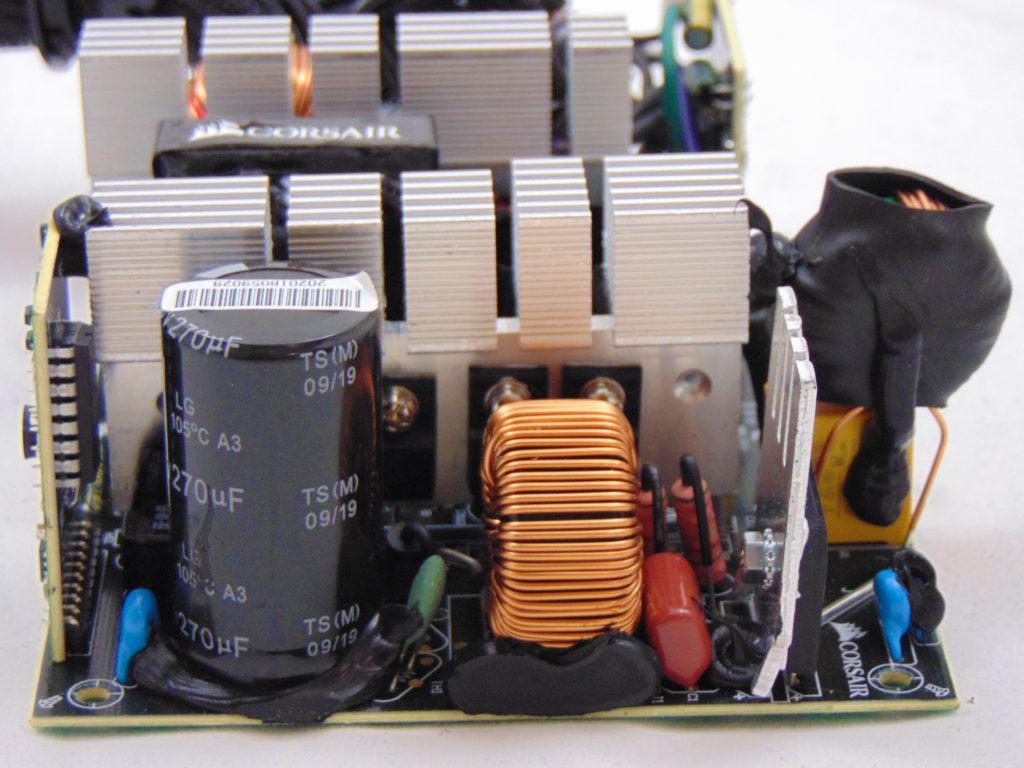


The CV450 input filtering begins up on the housing itself where we find some X capacitors and Y capacitors. The balance of the input filtering is found on the back edge of the main PCB. Next up is the bridge rectifier attached to the small heatsink in this unit. Behind that, and towards the middle we find a large heatsink housing the APFC and other primary side power components. Next to this is the APFC coil and main input capacitor. Speaking of this capacitor it is provided by Teapo with a rating of 400v 270uF 85C (which seems a bit small).
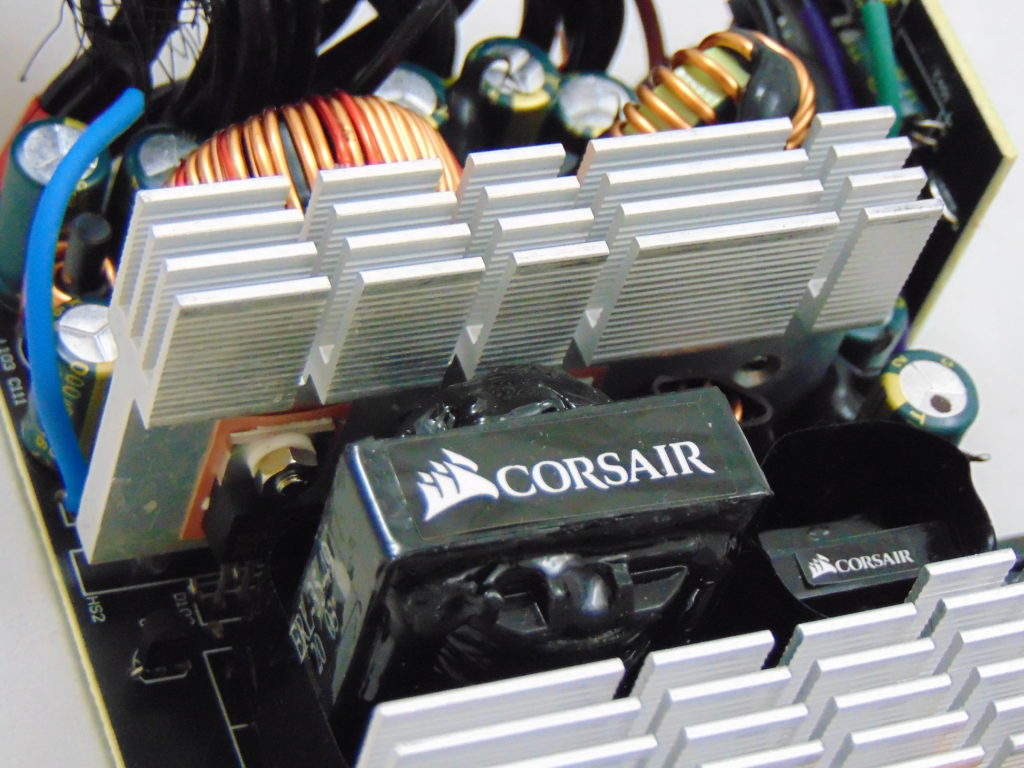
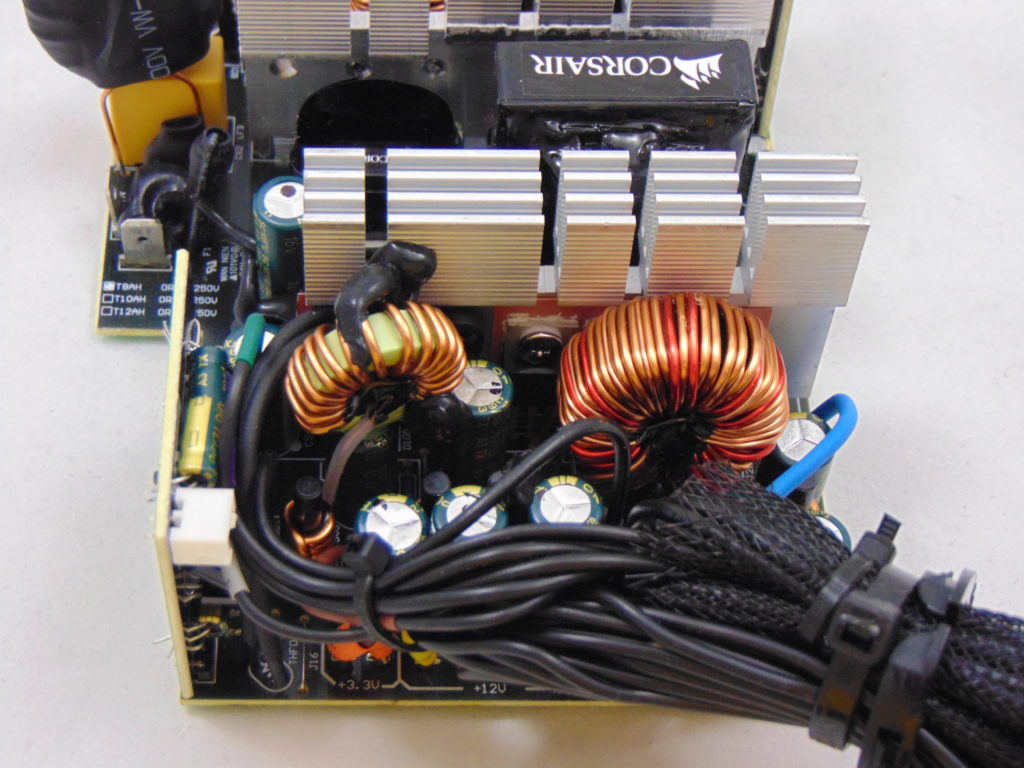

The secondary side of this unit looks a bit crowded mostly due to the fixed wiring nature of this unit and the large heatsink present here. Between the transformers and the coils for the group regulation, we find a large heatsink for cooling the secondary side power components. Throughout this area we find Teapo capacitors.
Build Quality Summary
Today’s CV450 is the first power supply we have seen from CV450 and it starts things off on a bit of a down note. Overall, the build quality looks decent but the topology is ancient and the component selections are underwhelming. The exterior is decent enough without being truly striking. The cables on this fixed wire unit are a combination of FlexForce style cables and standard wire loom. The integration seems to be well done but, as stated before, the component selection is on the value end of the spectrum. This is largely due to the Teapo standard electrolytics as well as a sleeve bearing fan used in this system. All in all, the CV450 looks like a very entry level (and even dated) unit. However, will the component selections and topology hold it back when we get to the load testing portion of today’s review? Let’s move on now to the load tests and see how this unit performs!
